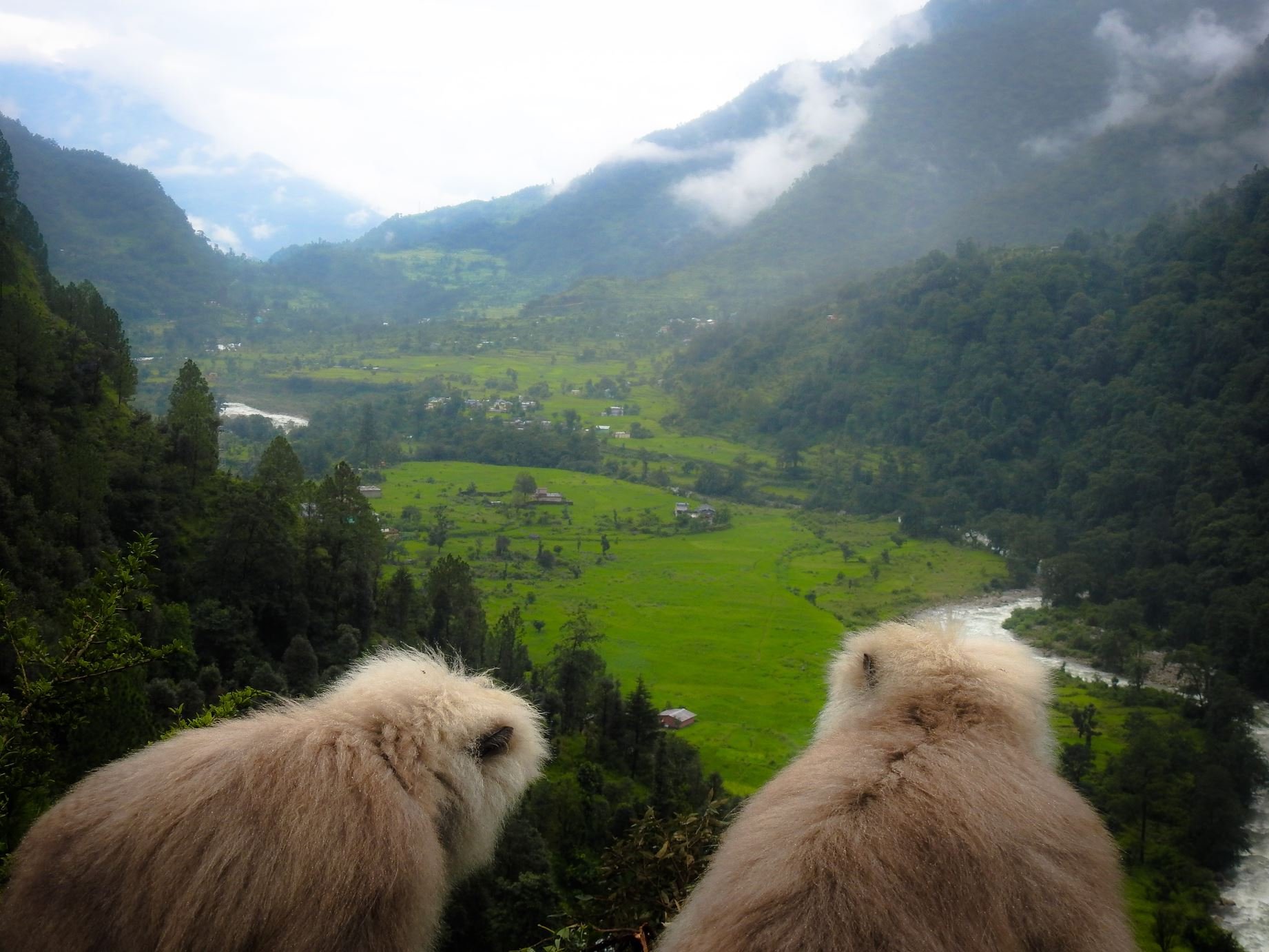Garhwal Himalayas
The Himalayan Langur Project calls the Mandal Valley its home. This majestic valley is full of biodiversity and has been a focus of researchers who want to study high-altitude Himalayan flora and fauna. Mandal valley is located in the Garhwal Himalayas of Uttarakhand, India. Mandal Valley is guarded by Rudranath massif in its North and the Tungnath in the west. The valley opens towards Gopeshwar on its East, and is bounded by the Pokhri valley to its South. Kedarnath Wildlife Sanctuary, famous for its floral and avifaunal diversity is located in Mandal-Chopta valley and covers the pristine Trishula reserve forests. The valley experiences distinctive seasonal changes in its vegetation which also regulates the cultural and livelihood of the local communities. The valley receives the majority of its precipitation during the monsoon months of June to August, although Mandal also receives orographic rainfall.
Kanchula Kharak
TThe Kanchula Kharak field site was established in 2021 to habituate and study a second troop of Himalayan Langur (~80 individuals), but many troops reside within the sanctuary. This field site is located inside the Kedarnath Wildlife Sanctuary, and to the South West of the Mandal field site, on the north facing slopes of the Garhwal Himalayas between 2450masl - 3000masl. Its name comes from the widespread species of Acer present in this landscape, with the most dominant one being Acer acuminatum, known as Kanjula in the local language. The forest is comprised of conifer mixed broad leaved forest, dominated by Quercus semecarpefolia and Quercus floribunda, along with dense growths of Aesculus indica, Abies pindrow, Pinus wallichiana, Taxus bacchata, and Corylus jacquemontii. This field site experiences drastic seasonality in terms of vegetation abundance, and is covered by snow during the months of late December to early April. The upper reaches of this site acts as a transition zone to the sub-alpine and alpine meadows of the Tungnath region and receives the majority of its precipitation during the monsoon season.
Mandal Field Site
This field site serves as the base camp and the operations center for the Himalayan Langur Project. This field site is named after the Mandal village, an oft forgotten village in the history of environmental activism. This is the place from where Chipko Movement started in the mid 1960s and wrote a new page in the history of environmental activism and community participation. This village is located south of Kedarnath Wildlife Sanctuary. This field site is 1400-1800 masl and is composed of mixed broad leaved forest, dominated by dense patches of Oak (Quercus leucotrichophora). Other major tree species that grow here include: Alnus nepalensis and Betula alnoides Rhododendron arboretum, Myrica esculenta, Pinus roxburghii, Prunus cerasoides, Celtis australis, Lyonia ovalifolia, Pyrus pashia, Carpinus viminea, and Daphniphyllum himalense. Over many years of human habitation, this landscape has been slowly been transformed from a continuous mixed broadleaf forest to a matrix of forest patches and anthropogenically modified landscapes.
We study a habituated troop of Himalayan Langur (~70 individuals) at this field site since 2014. This field site is also the epicenter of our community outreach activities, where we interact with the local communities of Gondi, Gweer, Kunkuli, Mandal, Siroli, and Sanso villages that are located around our base camp and forms a part of the daily movement range of the langur troop.
Currently HLP is focusing on new field site areas and has limited research opportunities for the Mandal Field Site troop.
Rudranath
Rudranath (~3600 m), situated north of Mandal Valley in the Garwahl Himalayas, is a landscape of Alpine pastures, forests, and rhododendron dwarfs. Rudranath is famously home to a temple dedicated to the god Shiva, but the landscape is also utilized by shepherds and a variety of other species. This includes large mammals like the Himalayan Black bear (Ursus thibetanus, V) Common Leopard (Panthera pardus, V), Tiger ((Panthera tigris, EN) (recently camera trapped [Hindustan Times, June 2019])), as well as wild ungulates such as the Musk deer (Moschus leucogaster, EN), Himalayan Goral (Naemorhedus goral, NT), Himalayan Serow (V), Himalayan Tahr (V), and the Sambar (Rusa unicolor, V).
In the context of the Himalayan Langur Project, livestock health, ethnography of shepherds, veterinary practices, and human relationships have previously been investigated.




